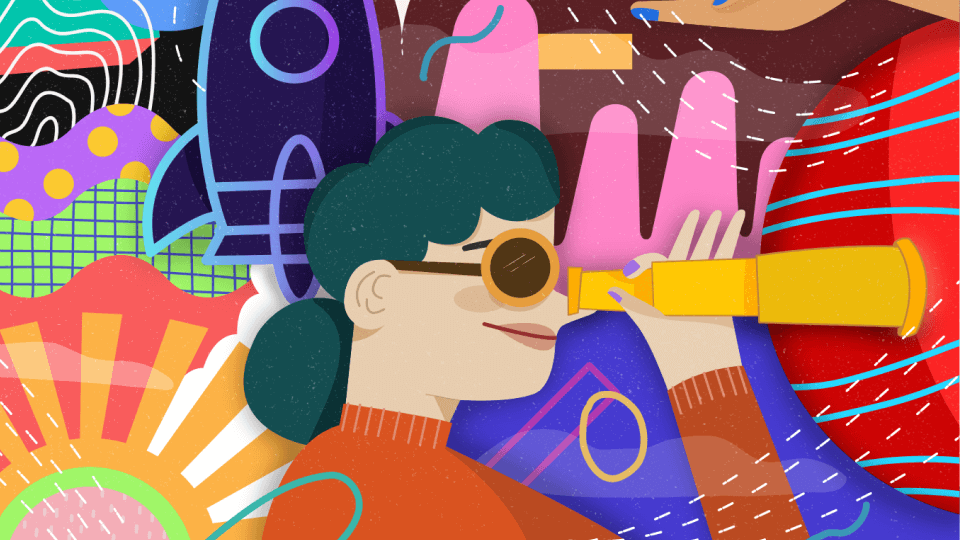From the very first days of our establishment, Yvette LIBBY has been and has always been fascinated by the retro fashion line. This can be stated to be the major fashion line in most of Yvette LIBBY’s creations, and we always honor the nostalgic beauty. Whether you like it or not, the magnificence of this classic fashion line continues to captivate millions of fashionistas, including Yvette LIBBY. As Pascal said: “The heart has its reasons which reason knows not“, Yvette LIBBY adores Retro style since it provides limitless inspiration for each of our designs. Let’s take a look at this distinct style and how it has influenced the fashion industry. The word “retro” derives from the Latin prefix retro, meaning “backward”. Retro art does not have a well-defined past. Retro art mainly encompasses the 19th and 20th centuries, while there is no strict limit to how many decades are covered in this historical time frame. Retro art, on the other hand, focuses on art movements from the 1920s through the 1970s. Designers might draw inspiration from retro art. Painting has had a huge influence on fashion trends all around the world from the beginning of the twentieth century. We can interpret fashion as a type of art because of the confluence of art and fashion. Here are four retro art movements that still inspire fashion today.
ART NOUVEAU
Art Nouveau is an ornamental style of art. It encompassed all types of art – from architecture to graphic art, to decorative arts such as jewelry, glass design, posters, and illustrations… Art Nouveau artists drew inspiration from natural elements. The specific ornamental characteristic of Art Nouveau is its undulating, asymmetrical lines, usually taking the form of flower stalks and buds, vine tendrils, insect wings, and other motifs inspired by nature. The popularity of the style has developed to further parts of design including fashion. Some of the major artists involved in Art Nouveau were Alphonse Mucha and Gustav Klimt…
Gustav Klimt is a successful painter in the Art Nouveau school with works that leave a distinct and unmistakable mark. And years later, it inspired designs, especially Pierre Cardin.
Another prominent artist is Alphonse Mucha, whose works still inspired many fashion designers.
Many of Yvette LIBBY’s designs have been infused with the soul of Art Nouveau, bringing them closer to nature and naturalness, notably the “RHYTHM”.
DADA
Dadaism is a literary as well as an artistic movement. Dadaism arose in Europe between the two world wars as an anti-contemporary social, political, and cultural movement that shattered all barriers between high art and everyday life. They were known for their mocking and witty demeanor, and they saw the creative act as more significant than the finished product.
Some of the major artists involved in the Dada movement were Marcel Duchamp, George Grosz, Jean Arp, Raoul Hausmann…
Although Dadaism didn’t show much influence in fashion when reach its peak in the early 20 th century, the ideas explored have continued to influence other art and fashion movements.
This iconic Yvette LIBBY creation is influenced by this retro style such as the “BODY LANGUAGE” design.
BAUHAUS
The Bauhaus movement was the first to integrate crafts and fine arts. The basic premise of this movement is “function over form,” and Bauhaus designs are visually beautiful while still focusing on functionality. Geometric designs with straight lines, smooth curves, plain shapes without embellishment, and primary colors are common in the Bauhaus style.
Walter Adolph Gropius, Wassily Kandinsky, Paul Klee, Marcel Breuer, and others were among the notable Bauhaus artists.
Countless pieces from the Bauhaus style have permeated fashion throughout the years, ranging from simple, less colorful to vivid and fussy. It has always been a rich source of inspiration for designers who have created significant fashion landmarks. Throughout her career, Mary Quant, a pioneer of the 1960s miniskirt, coupled youthful, off-the-shoulder dresses with geometric designs and vividly colored tights. Minimalism designers soon learned and brought Bauhaus into fashion with new and extremely distinctive nuances.
BAUHAUS
The Bauhaus movement was the first to integrate crafts and fine arts. The basic premise of this movement is “function over form,” and Bauhaus designs are visually beautiful while still focusing on functionality. Geometric designs with straight lines, smooth curves, plain shapes without embellishment, and primary colors are common in the Bauhaus style.
Walter Adolph Gropius, Wassily Kandinsky, Paul Klee, Marcel Breuer, and others were among the notable Bauhaus artists.
Countless pieces from the Bauhaus style have permeated fashion throughout the years, ranging from simple, and less colorful to vivid and fussy. It has always been a rich source of inspiration for designers who have created significant fashion landmarks. Throughout her career, Mary Quant, a pioneer of the 1960s miniskirt, coupled youthful, off-the-shoulder dresses with geometric designs and vividly colored tights. Minimalism designers soon learned and brought Bauhaus into fashion with new and extremely distinctive nuances.
These four art movements were revolutions in their own right. Each one has distinct traits that have made them famous and cemented their place in art history. Today, we can find a plethora of designs influenced by the works of various creative movements. Artworks have transitioned from the world of museums to the world of global fashion.



Comment here